Search
To search for an exact match, type the word or phrase you want in quotation marks.
A*DESK has been offering since 2002 contents about criticism and contemporary art. A*DESK has become consolidated thanks to all those who have believed in the project, all those who have followed us, debating, participating and collaborating. Many people have collaborated with A*DESK, and continue to do so. Their efforts, knowledge and belief in the project are what make it grow internationally. At A*DESK we have also generated work for over one hundred professionals in culture, from small collaborations with reviews and classes, to more prolonged and intense collaborations.
At A*DESK we believe in the need for free and universal access to culture and knowledge. We want to carry on being independent, remaining open to more ideas and opinions. If you believe in A*DESK, we need your backing to be able to continue. You can now participate in the project by supporting it. You can choose how much you want to contribute to the project.
You can decide how much you want to bring to the project.
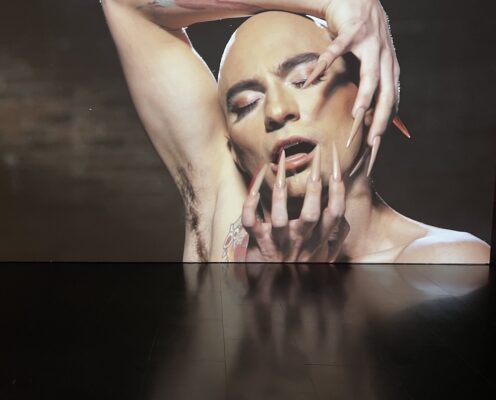
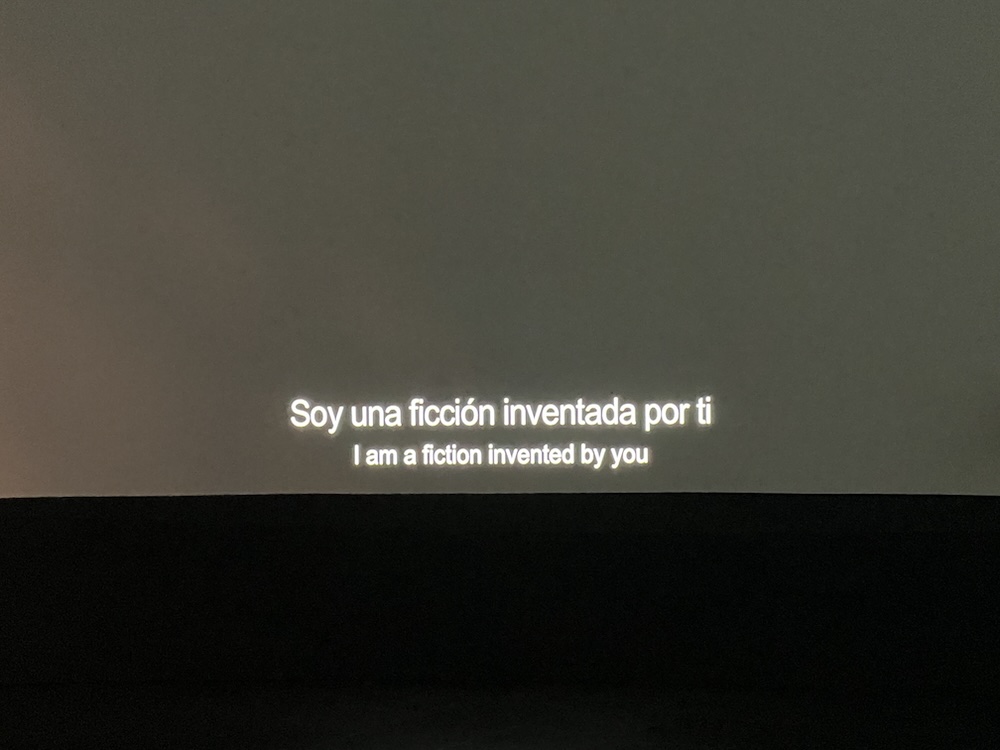
Carlos Motta. Nefandus, 2013. Exhibition Pleas of Resistance. Carlos Motta. MACBA (2025)
At the entrance to the exhibition there is a detour, a curve sustained by the tension between institutional architecture and the needs of the neighborhood. “Nothing new under the sun,” we might say when observing the relationship between museums and their surroundings in general, as museums act as a body that archives the political and historical processes that affect us.
On this occasion, the interior architecture takes the form of a ship. We must travel very far to get to the place where Carlos Motta invites us to enter, to think and reflect, and to see through this spyglass a collection of stories that haven’t ever really been told. In the exhibition, when these stories come into contact with the protocols that attempt to domesticate them, they become an invisible force which, inevitably, brutally manifests itself. This is also when desire, the tendency of living things to overflow, starts to sound like a curse.
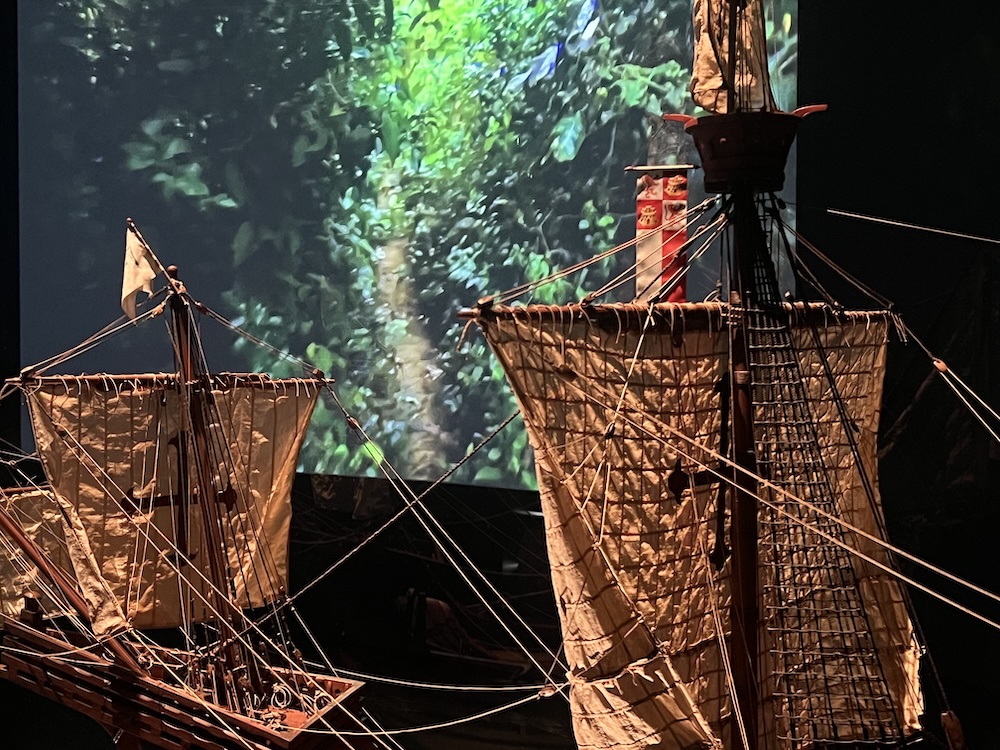
View of the exhibition Pleas of resistance. Carlos Motta. MACBA (2025)
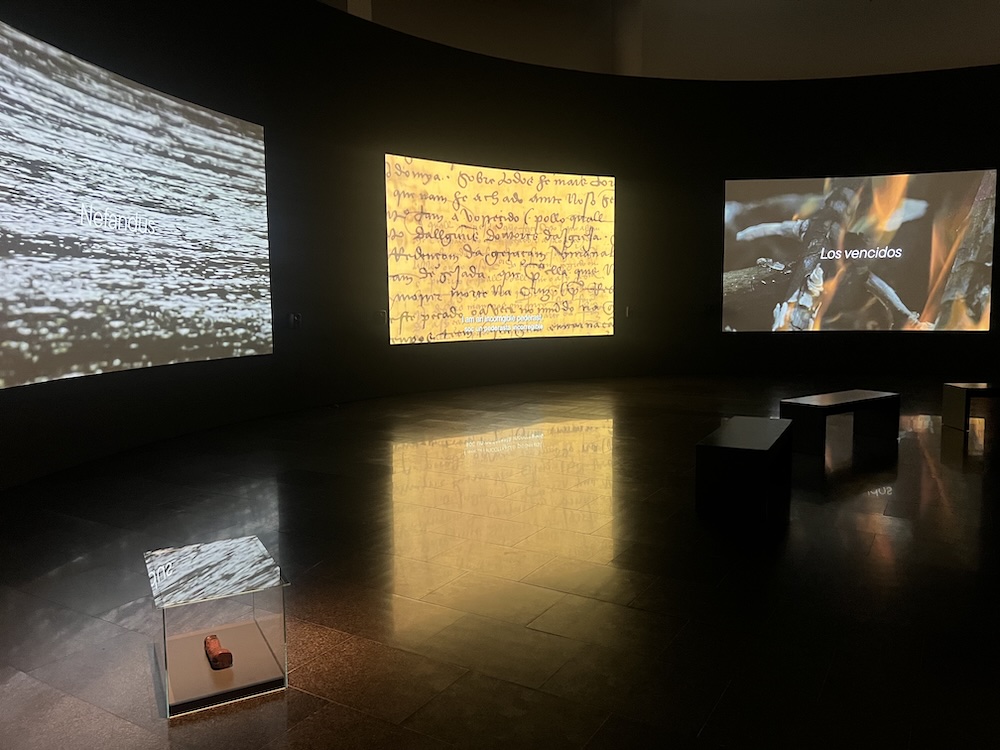
View of the exhibition Pleas of resistance. Carlos Motta. MACBA (2025)
After this, a series of photographs of a sea taken from the perspective of a dungeon represents unattainable freedom or the terrible distance that separates the imprisoned body from its home. This introduction is important because it gives us one of the keys to this work to help decode archives that never became documents but instead have been stored in bodies as collective memories and stigmas. This embodied dimension of the subject is the object of Carlos’ aesthetic search. The design of this exhibition room has an effect on the perception of the body itself. After passing through the dungeon, we must navigate different dimensions. We feel small in front of the video works that reveal enormous voices, stories that resonate deeply, the majesty of the jungle that beats within us with a calm and warm rhythm. And then we feel disproportionately large when interacting with the 20 gold replicas of pre-Hispanic sculptures, whose diminutive size makes the gesture explicit. Towards a Homoerotic Historiography reminds us of the power of small things.
Outside the exhibition room, we emerge as if from a hypnotic trance. On the way to the next room, we are accompanied by works and gestures that reinforce performance as an exodus from the Western idea of what is human. The museum tenses slightly, although within the framework of its own language.

As mentioned in the texts, Carlos Motta investigates the body as a dimension of knowledge, a surface where doctrine and suffering are inscribed, where, above all, the need to resist impossible mechanisms is born, where potential pleasure emanates from within.
The setting changes, other signs are arranged to test this concept. In Nosotrxs que sentimos diferente (We Who Feel Differently), a series of personalities are portrayed reflecting and developing perspectives from their collective perspectives on issues such as HIV treatment. The installation contains theoretical themes (how to organize ourselves and about marginalized people within democracies and their agency) in a playful space, designed for a specific body that navigates these ideas. An urban body. Returning to the ritual world that connects the next room with the first is truly a surprise, and the interim between acts seems like a leap within the time-space continuum.
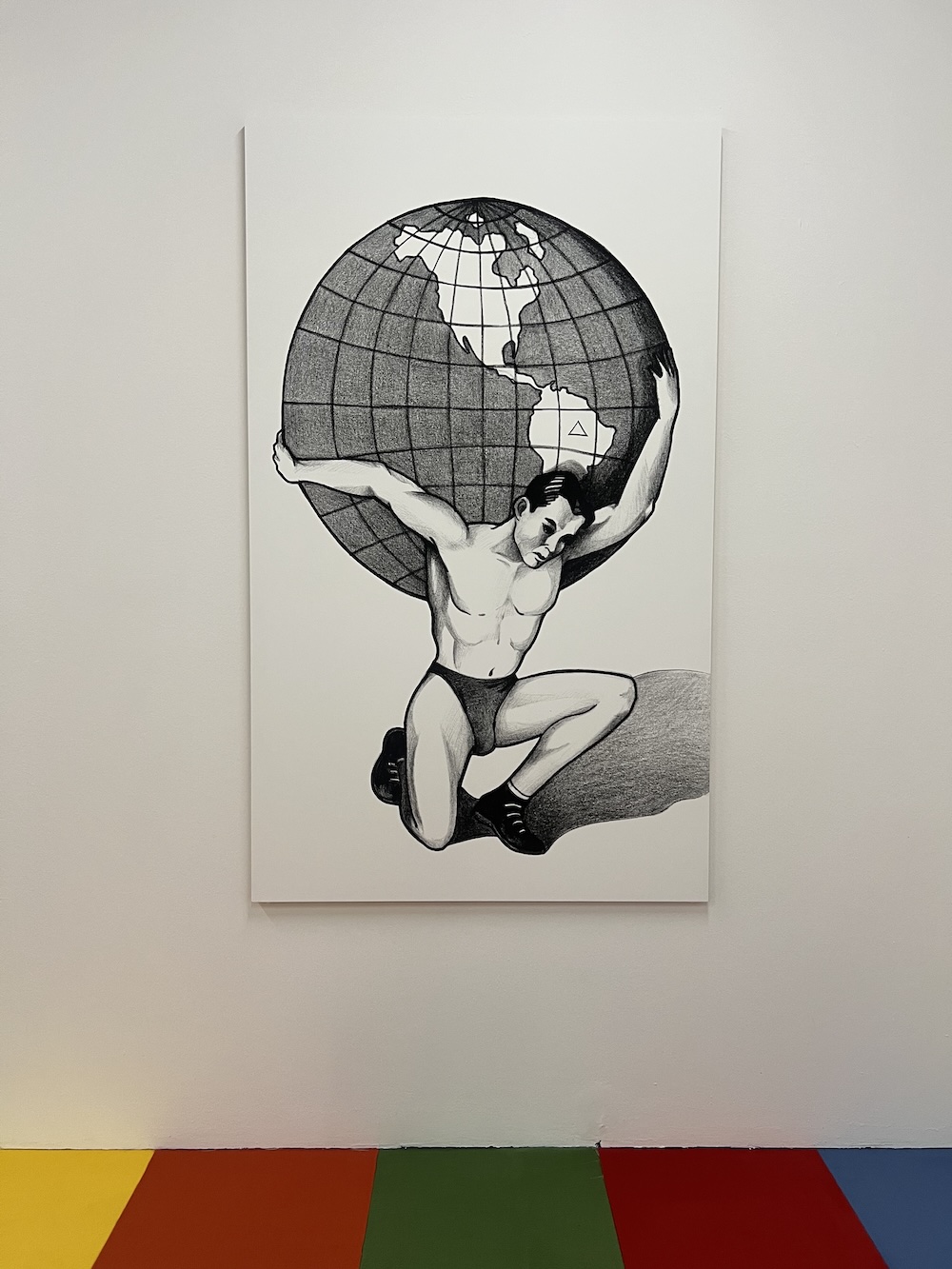
Nosotrxs que sentimos diferente (2012). Pleas of Resistance. Carlos Motta. MACBA (2025)
What follows is a hero’s journey within an MC Escher-like architecture. There are descents and ascents but the signs are inverted because the values of tragedy are a useless guide in this adventure. Once again, the exhibition design stands out, for while it is in the grandiloquent key to the museum, it also resembles the behind-the-scenes of a film studio where a small disorder peaks the curiosity of the visitor’s body. The spatiality of sound is also important in this seduction.
Amid monumental works such as Nosotrxs, el enemigo (We the Enemy) or Corpo fechado, El trabajo del diablo (The Dated Body: The Work of the Devil) we delve into a world that the artist has constructed over 25 years, a search for identity that eschews any essentialism. The construction of a person can be multiple, collective, self-determined, or mutant, but always dissident, inventing ways outside of the violence implied by the established order, as if this were the only way to be ourselves.
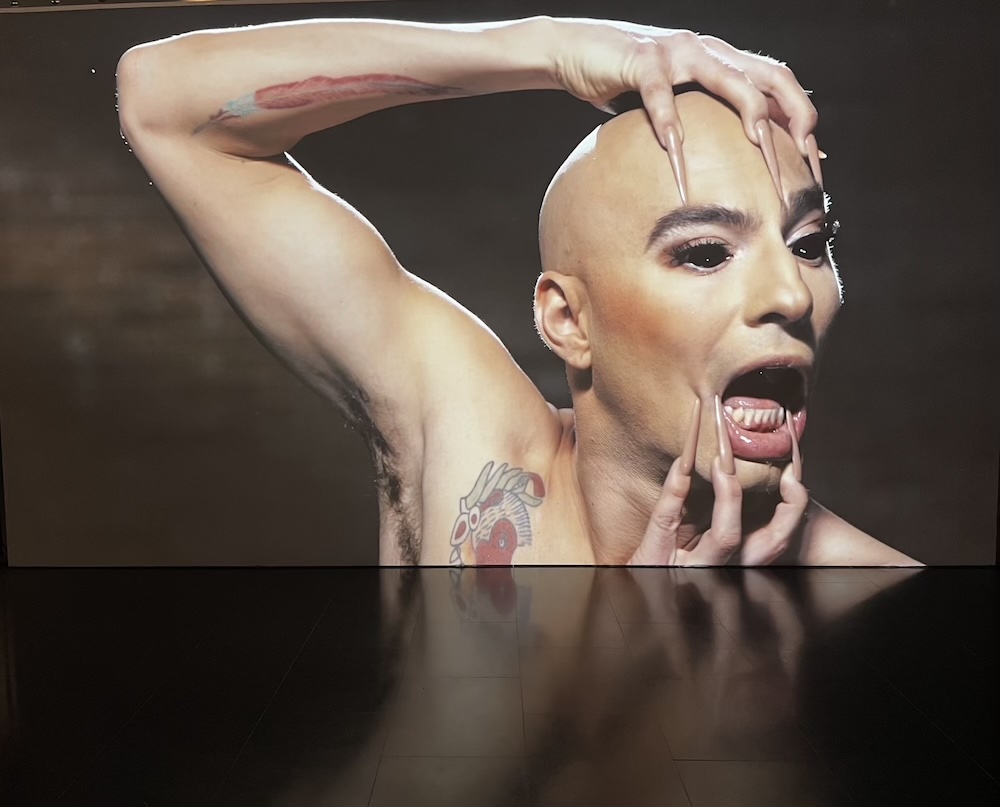
Pleas of Resistance. Carlos Motta. MACBA (2025).
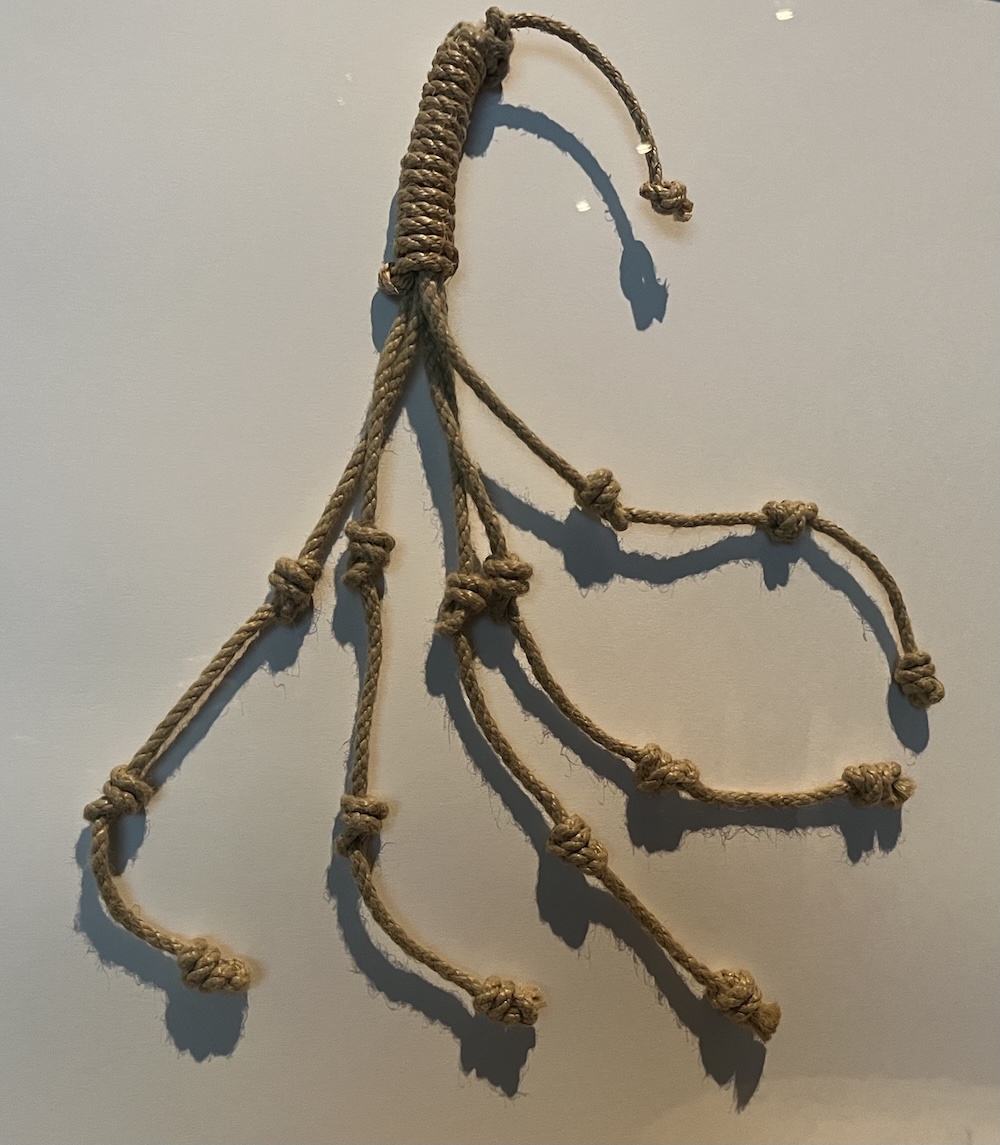
Sincretismo (2018). Pleas of Resistance. Carlos Motta. MACBA (2025). Courtesy of the Gallery Filomena Soares
Among the works in this and the following rooms, there is a piece that humbly yet boldly organizes the confluence of philosophies and concepts, Sincretismo (Syncretism), an object somewhere between a multi-pronged whip and a quipu.[1]A quipu is a device made of cotton or wool thread tied with knots of various types used to record numerical and possibly narrative information. This series of self-portraits from the late 1990s function as a cycle that returns us to a beginning, not the beginning of this exhibition but rather an unknown place in which every corner and work reveals its shadow. The visceral center of an America that has been discovered but never revealed. Some of us are connected by a silver thread which as we move away seems to tighten more and more due to the modern restlessness of not fully knowing one’s body, one’s home.
“do we not live on the (still silent) borders
from which I distance myself
the signs of álvar núñez cabeza de vaca
(and of his ñuflo)
that without
descending, ascending or exiting
gave themselves a continent to enter
even his own cross?
we live on the edge
confronting everything
that does not acquire the transparency of reality
within our own existence.” [2]Boulting, J., Cruz C., A., Cruz, F., Deguy, M., Fédier, F., Girola, C., Iommi, G., Pérez Román, J., Simons, E., Tronquoy, H., & Various Authors. (1967). [Amereida] (Vol. 1, p. 18). Editorial … Continue reading

Autorretrato sin título (1998). Pleas of resistance. Carlos Motta. MACBA (2025)
Carlos Motta. Pleas of resistance can be visited at MACBA until October 26, 2025.
| ↑1 | A quipu is a device made of cotton or wool thread tied with knots of various types used to record numerical and possibly narrative information. |
|---|---|
| ↑2 | Boulting, J., Cruz C., A., Cruz, F., Deguy, M., Fédier, F., Girola, C., Iommi, G., Pérez Román, J., Simons, E., Tronquoy, H., & Various Authors. (1967). [Amereida] (Vol. 1, p. 18). Editorial Cooperativa Lambda, Poetry Collection. |

Merlina Rañi (Brazil, 1987) is an art curator focused on digital media and scientific dissemination. She researches virtual environments and their relationship with physicality, her practice revolves around the production of narratives. Her latest productions focus on the impact of technological abstraction on political and affective aspects of society, around axes such as simulation, language, complexity and automatic learning.
https://merlinarani.xyz/
IG / X: @merlina_rani
"A desk is a dangerous place from which to watch the world" (John Le Carré)